Let’s have a little fun with today’s post.
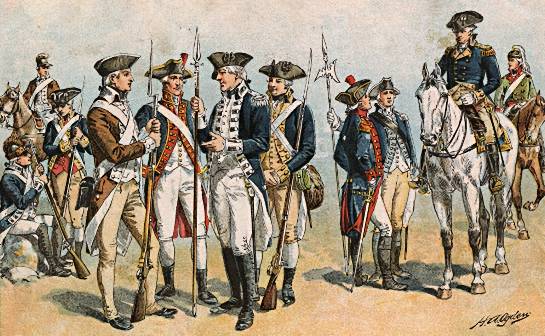
Two of our most popular movie stars from today’s big screen have ancestors who fought in the American Revolution.
Brad Pitt’s sixth great-grandfather, Abraham Hammer, who was a Quaker, was told to leave his Quaker community in 1768 for “warlike preparations.” He was among the many who petitioned North Carolina for unjust taxation. Their petition later started the Battle of Alamance, which is considered to be one of the first battles of the American Revolutionary War. (Source: Access Hollywood)
According to the NC Historic Sites webpage on the Battle of Alamance:
Here in 1771, an armed rebellion of backcountry farmers called Regulators battled with royal governor William Tryon's militia. The spark for this conflict was growing resentment in the Carolina colony against the taxes, dishonest sheriffs, and illegal fees imposed by the British Crown. In response, the Regulators were formed and began to fight back. Though the rebellion was crushed, a few years later their tactics became a model for the colonists fighting the British in the American Revolutionary War.
The battle began on May 16 after the Regulators rejected Tryon's suggestion that they disperse peacefully. Lacking leadership, organization, and adequate arms and ammunition, the Regulators were no match for Tryon's militia. Many Regulators fled, leaving their bolder comrades to fight on. …The rebellion of the Regulators was crushed. Nine members of the king's militia were killed and 61 wounded. The Regulator losses were much greater, though exact numbers are unknown. Tryon took 15 prisoners; seven were hung later. Many Regulators moved on to other frontier areas beyond North Carolina. Those who stayed were offered pardons by the governor in exchange for pledging an oath of allegiance to the royal government.
Johnny Depp’s fifth great-grandfather William Depp served in the American Revolution. He fought in the March 1781 Battle of Guilford Courthouse in North Carolina. He enlisted in the Virginia state militia three times. (Source: Access Hollywood)
According to the National Park Service webpage on the Battle of Guilford Courthouse:
On March 15, 1781. the largest, most hotly-contested battle of the Revolutionary War's Southern Campaign was fought at the small North Carolina backcounty hamlet of Guilford Courthouse. Major General Nathanael Greene, defending the ground at Guilford Courthouse with an army of almost 4,500 American militia and Continentals, was tactically defeated by a smaller British army of about 1,900 veteran regulars and German allies commanded by Lord Charles Cornwallis. After 2 1/2 hours of intense and often brutal fighting, Cornwallis forced his opponent to withdraw from the field. Greene's retreat preserved the strength of his army, but Cornwallis's frail victory was won at the cost of over 25% of his army.
Guilford Courthouse proved to be the highwater mark of British military operations in the Revolutionary War. Weakened in his campaign against Greene, Cornwallis abandoned the Carolinas hoping for success in Virginia. At Yorktown, seven months after his victory at Guilford Courthouse, Lord Cornwallis would surrender to the combined American and French forces under General George Washington.
In reference to yesterday’s post...
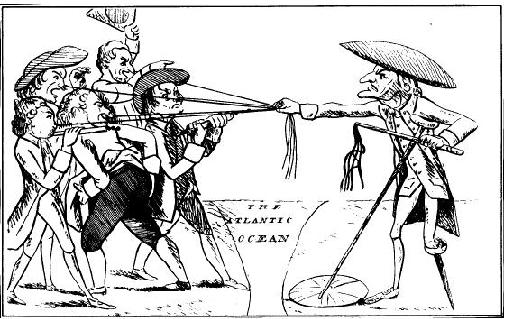
Political Cartoon: “Poor Old England endeavoring to reclaim his wicked American children”
Here is an example of the experiences faced by Loyalists living in the colonies. This letter describes the hardship faced by an entire family in Tryon County NY who remained loyal to the crown.
RETRANSCRIPTION D’UNE LETTRE DE WILLIAM KENNEDY AU COLONEL ABRAHAM CYLER
Mountriall yr 6th November 1782
Sr
Those few lines are to let you know that I am very glad that you or so good a Kings subject should be put in head of the Loyalists whom some are fellow sufferers & some not. It is a thing now at present to be looked into who is loyal & who not and what they have suffered for their loyalty and what not. For my part I heard of your coming to this town by my not being acquainted with you in person made me not go to see you though. I was well acquainted with what you suffered for your loyalty.....and as for my part when you come to enquire into my character you will find that I have suffered my part from the beginning of the war for when you were confined in Albany and elsewhere I was confined in Johnstown so long that I had one pound and fifteen shillings to pay for the water I used. I got out after a while and In sometime after there where a party of Indians went from here to sacondagy comanded by Capt. Flaton who is now here. The rebels made an atempt to prove that I aided assisted & provisioned them. I was obliged to fly from my house the 5th June and kept myself secreted till the last Tuesday in 7ber when by the advice of my best friends I stood Tryall of my life in Johnstown where they had not sufficient prooff against me. I got clear. The year following there was a party of Indians broke out at Mayfield where they killed one Dunam & his son. The rebels aledged against me that I was the cause of it and that the said Indians come from Sr John Johnson to me with leters and to cary news or leters back from me how the country stood affected upon which there were beter than two hundred rebels come to bury the dead and took me prisoner and after to setle their minds they hung me up till they thought I was dead and then they cut me down and my wife being there she brought me back to my house on her back which was beter than a half a mile. In about a month after when they found I was alive and likely to get well they came and tore all the house to pieces and robed me of all the cloathes that was in the house which among the the rest they had thirteen lining shelts (sheets?). So next morning my wife and six small children were naked except what they lay in then I had a good many head of chatle and they warned me from my farm 7 miles where I remained under suspition & a bad character with them till they took & tryed one Harmonious Flock a Low Dutch man who is here now setler in Sr. Johnn Regt. & I for Life at the house of Margret Wemple at the Mohawk River where we were cleared of the fact yet very much suspected then. I remained so untill last October that is thirteen months ago when some Evill minded person who wanted to cary favour with the rebels informed them that I had sent upwards of a hundred men to Canada for the use of Sr John Johnson and likewise had leters backward & forward and that I was so crafty in it, it could not be proved against me yet the same person will doubtless appear as Loyalist upon which Colonell Merinus Willet sent a Gaurd and took me prisoner to fort plain or Conajohary where he erected a galows to hung me he could not get sufficient evidence against me though still he kept me prisoner the mean while Major Ross and Capt. Butler broke out with a party and burned severall houses at Warinsbush and fought the Rebels at Johnstown After they retracted I was sent prisoner to Albany where I remained prisner for near five months in Company of Mr Shepherd Bllor Chambers Swain and several others where we were not to get one penyworth of subsistance at the Country’s cost. Then Doctor Stringer & frind a Fisher & their other Confederates sent word up where I lived that I certainly would be hangd. Upon which Warins Bush peopel to make up for their loss took my chatles horses sadle bridle cloathing houshowld stuff and even my wife and childrens shirts shoes and stockings. Afterwards inspight of Stringer & his club Judge Morris got out Shepherd Bloor and I at one day and when I got out I entended to take the law of them for my efects but they soon put and end to that. They come with 48 men and warned me and several others at a Quarter of an hours warning to quit the Country upon which my wife was oblidged to leave her house with her six children and she bearfootd with her youngest child on her back when the snow was upwards of two foot deep.....and they would not allow her to take a loaf of bread out of the house You may very well judge Sr that I could not have much money neighther had I cloathes yet I was oblidged to find enough to fetch me and my wife and six children into Mountriall at my owen expenses I realy did expect and so did every gentleman and every poor man that was a good Subject between Canderhook & the German Flats that if ever It would be my turn to come to Canada I would surely be well dealt by. Yet I canot say that I receved a peny favour yet from ever a man in America and as I have no trade nor no money to begin with this is a hard place to live in I canot but be very thankfull to both Major Jesop & Mr Ducoine for their kindness to me yet the Bigest Rebel comes out of the country is beter used than the best subject you but enquire of Mr Stuarts Revce and of Mr Sanders Cambell and in short of all others that is called Loyalists wheather all and more that I write conserning Sufrence is not true which after due consideration I hope you will assist me in Justice what Lyes in yr power as I am Sr. Yr. most Humble and most obedt. Servant. Wm. Kennedy.
New Project: Loyalists and Secessionists
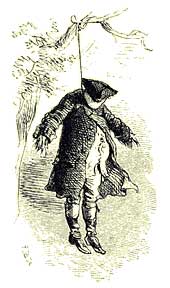 One of the subjects that has caught my attention is the personal experiences of the post-Revolutionary War Loyalist and the post-Civil War Secessionist (in the North). I believe these two demographics to be quite similar in many ways.
One of the subjects that has caught my attention is the personal experiences of the post-Revolutionary War Loyalist and the post-Civil War Secessionist (in the North). I believe these two demographics to be quite similar in many ways.
My interest centers on what they experienced in their day-to-day lives after their sides surrendered. As a political minority, how did their communities treat them? Were they humiliated or harassed? Did their friends and family turn on them out of embarrassment? Many times these loyalists fled during the conflict only to return home after the war filled with bitterness or regret. I can’t imagine the discomfort one would have after supporting a wartime cause that was the opposite of one’s neighbors. (Can you say awkward?)
I just started researching letters and memoirs from both wars depicting the firsthand experiences of the “losers” living in enemy territory. If I am able to collect enough material, I hope to author a long-format feature article with hopes of publishing it. From what I understand, many British Loyalists stayed in the United States and even became citizens of the new country. Some of these non-patriots became prominent in their communities and even held public offices. These included Samuel Seabury (the first American Episcopal Bishop) and Tench Coxe (a political economist and delegate for PA). Alexander Hamilton enlisted the services of many ex-loyalists to create a political alliance of moderate Whigs in New York from 1782-1785. The majority of loyalists however, never returned home and settled elsewhere.
Secessionists maintained their citizenship after the South’s surrender in 1865, but in many cases they were forced to move away in order to avoid post-war persecution from their victorious counterparts. Our friends Robert Moore and Richard Williams have done an outstanding job of introducing us to Northern Secessionists and Southern Unionists. They have taught us that it’s far too easy to assume that everyone was “on board” with a particular cause just because they dwelled in the same region or belonged to the same class. These neglected perspectives give us an accurate depiction of the division that existed on both sides.
Another angle that I may take is a comparison and contrast study of a single Loyalist and Secessionist. It would be interesting if I could get two from the same state or city such as Boston. By examining these two groups under similar circumstances we can see what social attributes evolved and which ones didn’t. The questions I hope to answer are numerous. What was the climate like for these cast-outs in the post-war period after the Revolutionary War and the Civil War? What was the same? What was different? Were they able to assimilate? Or did their “treason” mark them forever? Even better, did they regret their decisions? Most importantly, what became of them? Were they able to reconcile their differences or did they remain apart from their peers? Were they killed for their beliefs?
Now that I look at it, this may be a book in the making.
See you in Pittsburgh
This week marks the 150th anniversary of the start of the American Civil War. In recognition of the Sesquicentennial, I would like to invite you to the Carnegie-Carnegie’s Civil War Weekend on April 30th. I will be giving 2 talks on the experiences of the 123rd PA Volunteers at the Battle of Fredericksburg and hosting 2 screenings of our documentary film “The Angel of Marye’s Heights.” Both of these events are free. DVDs of the film and CDs of the soundtrack will be available for purchase. For more info and a complete schedule, visit the Carnegie-Carnegie’s website.
Next Post: The Old Guard
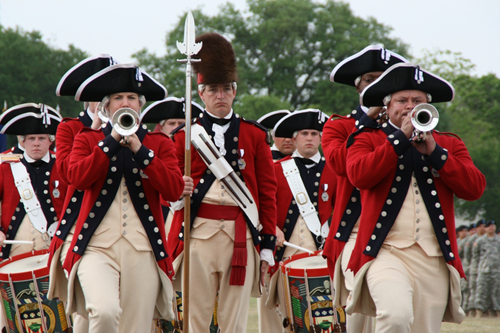
Today I had the pleasure of watching my daughter Madison perform in the Cherry Blossom Parade in Washington DC. She was a member of the All-Star Tap Dance Team, made up of 480 of the top tappers in the country. (You can view a video of their rehearsal here.) She was front and center and got some nice TV time. We couldn’t be prouder. Also participating in the parade was the U.S. Army Old Guard Fife and Drum Crops. The 3rd Infantry Regiment, the Old Guard, is the oldest active infantry regiment with direct lineage to George Washington’s original Continental Army during the Revolutionary War. The Old Guard wear uniforms patterned after the soldiers of 1784. They resemble the continental musicians’ uniforms, and they are different than the continental soldiers’ uniforms. My next post will present their history, then and now.

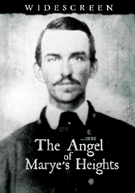
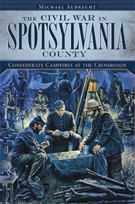
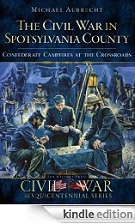

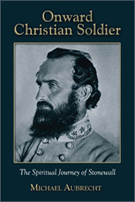


 One of the subjects that has caught my attention is the personal experiences of the post-Revolutionary War Loyalist and the post-Civil War Secessionist (in the North). I believe these two demographics to be quite similar in many ways.
One of the subjects that has caught my attention is the personal experiences of the post-Revolutionary War Loyalist and the post-Civil War Secessionist (in the North). I believe these two demographics to be quite similar in many ways. 